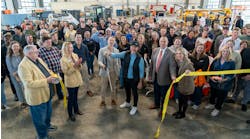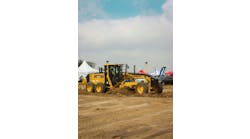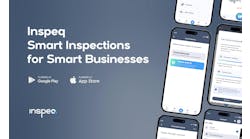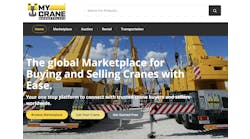Interview with Larry Miller: Real-Time Data
As part of RER’s “Interviews with Software Manufacturers” series, Sycor Americas’ vice president Larry Miller talks about added functionalities, new Microsoft tools, mobility for systems, the value of frequent updates, and more.
What have been the most important new developments in your software in recent times?
Miller: In the last year, we have added functionality to enhance remote interaction with Sycor.Rental, including:
· Additional functionality for mobile workers to pick and deliver equipment to the customer site. Drivers have the ability to select the unit at the time of delivery and perform operational checks on the equipment. They can take a picture and obtain a customer signature. Upon the end of the rental period, the driver can inspect the equipment with a mobile checklist, take a picture and obtain a customer signature. The unit can be serviced and set “rent ready” and for delivery to another customer without requiring the equipment to be brought back to the home yard.
· Additional functionality has been added to our customer portal that allows the customer to see a map of their equipment, lengthen or shorten the rental period, order a pickup, order a replacement, create a service request or request a new piece of equipment for future delivery.
· Expanded IoT integration to vendor portals, third-party telematics providers and though Azure IoT Server, allows us to provide a more complete picture of where equipment is, how it is functioning and how much the rental equipment is being used. This helps drive down operational costs and increases revenue.
What are likely to be the most important new developments in your software in the foreseeable future?
Microsoft continues developing new tools such as the HoloLens, which has tremendous capability that will truly impact the way workers do their jobs. As Microsoft-based software, we are working with our development teams on how and where to apply this exciting technology.
The past couple of years we heard a lot about rental companies adopting e-commerce as a far more important part of their business and software manufacturers are offering more capabilities. Enhanced customer portals have been a big part of it as well. Now that people are returning back to more “normal” lifestyles and work methods, are e-commerce and enhanced customer portals continuing to be just as popular?
Most of our enhancements involve interactions outside the brick and mortar of a branch. Field employees and customers need to be able to interact with back-office data in order to streamline transactions. With these capabilities, rental companies can do more work and manage more machines with fewer staff, which helps increase the bottom line while also improving customer satisfaction. Plus, with Sycor.Rental, all systems are hosted on Microsoft Azure so these interactions are safe and secure.
Rental companies are now receiving a lot of data through telematics communications. How is your software helping rental companies to process and most effectively utilize this information?
We have connected telematics data to our customer portal. The customer can see where the rental units are at their sites and have access to operational data as needed.
How does your software help sales staff and service personnel on the road?
Employees need to understand their job responsibilities as well as manage customer expectations. This means “data.” They need this data in order to do their job well and to make good decisions. They need immediate feedback when problems occur without having to call someone for the info. Sycor.Rental makes this much easier because all your data is in one platform. With our software you get real-time data quickly so you have the latest information right when you need it to make the right decision.
What are some of your long-range thoughts about where software is going a few years down the road?
There are a lot of products on the market that are just plain “old technology.” You still see companies deploying the old stuff (e.g. AS/400 code) because it is inexpensive. You see a lot of “hosted systems” being sold that are really just “on Premise” systems being hosted on a public/private cloud. These systems use the traditional “Install version one, modify, modify, oh no, it’s time to upgrade” strategy. True cloud-based solutions, like Microsoft Dynamics 365 Finance and Supply Chain Management, are updated up to eight times each year.
These updates utilize sophisticated life cycle service tools that automate testing so that an upgrade to the latest version is literally an “over the weekend” IT job. This is probably the least discussed feature of Dynamics 365 and it can have a tremendous impact on the overall system cost. Another key factor is that as you “continually update” your system in this way, you get the latest system features provided to you as you go. In five years, you do not have a five-year-old system; you have a current, up-to-date system. Little by little, the old technology will eventually go away, just as we saw with DOS, Unix and GUI applications.






